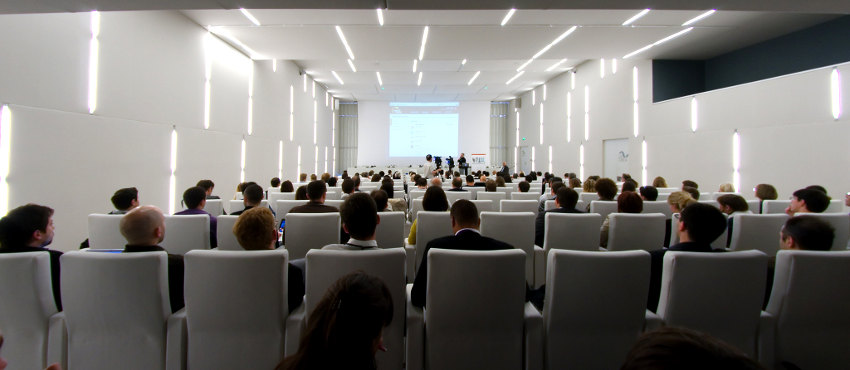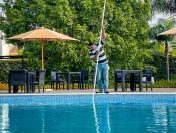When most people think of business conferences, they picture serious professionals in suits gathering in banquet halls, or ballrooms, to listen to hour upon hour of lectures and presentations; and only taking breaks to retire to a chain restaurant or hotel bar to talk shop until the next round of presentations.
On the one hand, it is understandable that people would have this image, since the main purpose of these conferences is to share as much information as possible. However, this doesn’t mean that conferences have to be bland or boring. There are plenty of ways to host a successful conference that is both fun and informational.

First: Choose a Great Location
The main thing that makes most conferences somewhat dull is the choice a venue. A suburban hotel might have all the amenities you need for the conference, but the surroundings also tend to be fairly homogenous, with not a lot of things to keep people engaged between information sessions.
Rather than set up shop in the middle of nowhere, consider holding your conference in an area with a lot of activity, such as a hotel near the Boardwalk in Atlantic City, or a Las Vegas Resort. These venues have all the business amenities of your suburban hotels with the added bonus of having a wide array of activities that people can engage in around the hotel. Many of these places also have activities inside the hotels, including live performances of big name acts.
If Atlantic City or Vegas are not your style, consider hosting the event at a venue in an upscale urban area, close to a lot of restaurants and entertainment venues, instead of in a suburban setting. Or, try timing your conference with a local event, such as a music festival, which you can use as an entertainment option.
Choosing a venue that has entertainment options nearby will make your conference one to remember.
Second: Scout and Prepare the Location in Advance
Finding the location is the first part of the battle, the second is preparing the location so that it best supports your conference. This could include making sure that you have all of the communication and technological equipment you need; that the meeting places are convenient to guest rooms so that attendees don’t have to spend a lot of time travelling back and forth – which is especially important if attendees have to make multiple trips back to their rooms; and, that there are plenty of activities on-site to keep attendees interested during conference hours.
After all, you want them to enjoy the sights when the day is done, but you don’t want them wandering off during conference hours and missing your presentation.
Whatever the case, you should work closely with the personnel at the venue to ensure that everything you need will be where you need it long before the event ever starts.
Third: Capitalize on Technology
We live in the age of mobile computing, and it’s guaranteed that most, if not all, of your attendees will have some kind of mobile device. You could take advantage of this by using Android, iPhone, or iPad apps to engage with and inform your attendees.
Using an app will help you have a clear schedule and agenda, so that your attendees know what to expect. It will also help you broadcast changes and updates faster and more efficiently because you can blast the information out to every device at once, rather than rely on paper schedules or the hope that everyone will hear a message over the PA system.
These apps not only keep your attendees in the loop, you can even configure them to have games and activities that engage your attendees between information sessions.
In addition to using apps as your primary form of communication, you should also ensure that the venue has a strong and secure Wi-Fi, so that people don’t have to use all of their data; and plenty of charging stations so that your attendees don’t have to worry about running out of juice.
Fourth: Have a Tight but Varied Program
Make sure things run on schedule and that presentations and lectures don’t run over their allotted time. Going from lecture, to presentation, to lecture can be both boring and overwhelming. Rather than schedule a lot of information sessions back-to-back, spread them throughout the day and schedule free time or fun activities between sessions, and include information on the entertainment available in the area.
You should also make your attendees aware of the program, and entertainment options, long before the conference starts. That way they will know when are expected to be in informational sessions, and can plan their down tome.
And, oh, don’t forget to engage your attendees! It matters much more than you think:
Fifth: Enjoy Yourself
As the host, you will need to do a lot of work, and wear a lot of hats. However, the host also sets the tone for the conference. If the people in charge are running around looking harried and overwhelmed, that’s going to carry over to your attendees.
This is one of the reasons why it’s so important to do as much scouting and prepping as possible in advance.
The thing to remember is that this conference is your baby, and that you should enjoy it as much as your guests.
Photo credit: Frederic Bisson / Flickr


